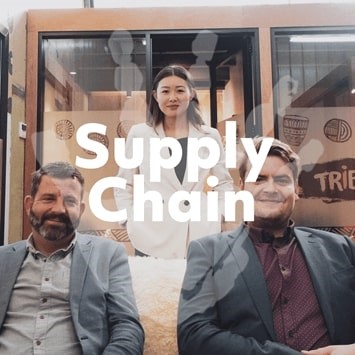Understanding the benefits of temping
We sat down with Lidya Paljk, our team lead in office support and call centre, to understand the benefits of temping, and find out how to make the temp model work.
Why do businesses use temps? Have their needs changed over the last 5 years?
When I first started in recruitment, the nature of temp roles would often be one day or transaction assignments to either cover reception, help with processing of application (data entry) or support a finance team at the end of the month. A business might also bring temp(s) on board to provide cover while they recruit the role on a permanent basis or cover longer-term leave.
More recently, I have noticed there isn’t as much of this and businesses are starting to bring temps on for longer periods of time where either a business has had an influx of work, are in the process of offshoring or changing systems, or are needing to put together teams to help with project-based work. No longer do organisations view temps as “contractors” but most of our clients embrace temps and view them as their employees (although, they are technically employed by us).
What’s the benefit of having a temp workforce?
Having a temp workforce means an organisation has the flexibility to scale up and down throughout the year to cater to different workloads. It also gives a business the flexibility to reallocate resources based on business requirements, scale-up and reallocate on a P and L rather than needing to go through permanent headcount approval.
In the past couple of years, I have been fortunate enough to help businesses pull together multiple temp teams because they are needing to mobilise quickly and don’t have a permanent headcount.
Having a temp workforce also allows teams to have a trusted extra pair of hands and let permanent staff allocate tasks which someone can pick up quickly, so they can get on with their job without having to work crazy hours to get everything done!
Does a temp workforce have any challenges? How do you overcome them?
Like most things, having a temp model will have its challenges especially if this isn’t something a business has done before.
The most success I’ve had is when an organisation embeds and treats their temps as if they were permanent employees. I advise my clients to conduct regular one on ones and give them the training and support as if they were permanent employees. I also encourage them to speak about what their career could look like within their team or organisation.
At the end of the day, people want to know how they are performing in their role, what their future looks like and how they can add value to a business. Communication is key – the more information, certainty, reassurance and feedback you can give someone, the more value they will add. It will pay dividends.
By the same token, if someone isn’t meeting expectations, I advise my clients to have the tough conversation and always offer to facilitate this. There needs to be clear expectations and objectives that are set early on, so people understand what their individual goals are and know what is deemed as success to a business or manager.
Tell us about a time you placed a temp who was a total Rockstar.
There are so many! One that really stands out is I remember interviewing someone 3 years ago who had recently arrived in New Zealand with his family, who was wanting an entry into the New Zealand workforce.
Prior to moving to New Zealand, he had held several senior roles overseas, had lived in some amazing countries, but it was going to be a step down from his previous roles and there was a slight risk he might get bored in the role.
Fast forward 3 years, this individual was promoted to a team leader role and then again into a senior management role.
He took a risk and was able to get a foot in the door with a business that quickly realised his skill-set. By looking outside a candidate’s CV, and understanding their story, it’s amazing what can happen. It’s a very fulfilling part of my job to see people grow like this.
With “the rise of the gig economy”, are you seeing an increase in the number of businesses using temps?
That’s a hard one because not all businesses see the benefit of having a temp workforce and some businesses still like to have salaried employees. I have always had volume in the temp space for many different reasons. I don’t think I can yet comment on the number of businesses using temps, but I know that our temp volumes are consistently on the up.
I have worked with several clients who have brought on board temps solely to help with projects. This has worked well for several businesses I have worked with where they run a temp heavy workforce to help set up contact centres to help with overflow of work during specific times of the year.
I remember coming in to work one week and needing to find 40 coordinators who were to be inducted weekly over the course of a month. The purpose of their roles was to liaise between multiple stakeholders to help with a roll-out of a new service. This worked well because they weren’t sure what the project was going to look like, the processes and duration – so temps gave them flexibility!
For the temps, it meant individuals had the opportunity to join a pretty cool business and help set up this brand-new team. For those on working visas it meant they had the opportunity to secure work for 6 months, go off and travel for the winter season and come back and secure other work.
I know within the financial services industry, having a temp workforce allows these financial institutions to very quickly pull together teams to help compliance or manage a spike in calls if there has been a change in legislations.
We use temps here at Tribe, why is that?
We love temps at Tribe! We’re a business which is always changing, and we move at such a rapid rate that having temps means not only do we get access to a varied range of experience and knowledge, but it also means we have the flexibility of having resource when things get crazy busy!
Emma, one of our Chiefs says, “Scalability, flexibility, and being able to attract more senior talent with varied backgrounds (for functions like our admin roles). Administration often has a high turnover and we have combated that by employing temps or people on fixed-term contracts. Often these people are on visas with set time frames so have different motivations, they want to earn money in a good environment – work hard, travel hard – and it’s working really well for us.”
If you want to find out more about temping, get in touch with Lidya Paljk, Team Lead - Office Support and Call Centre, Temp & Perm, on 022 618 8339 lidya@tribegroup.com






